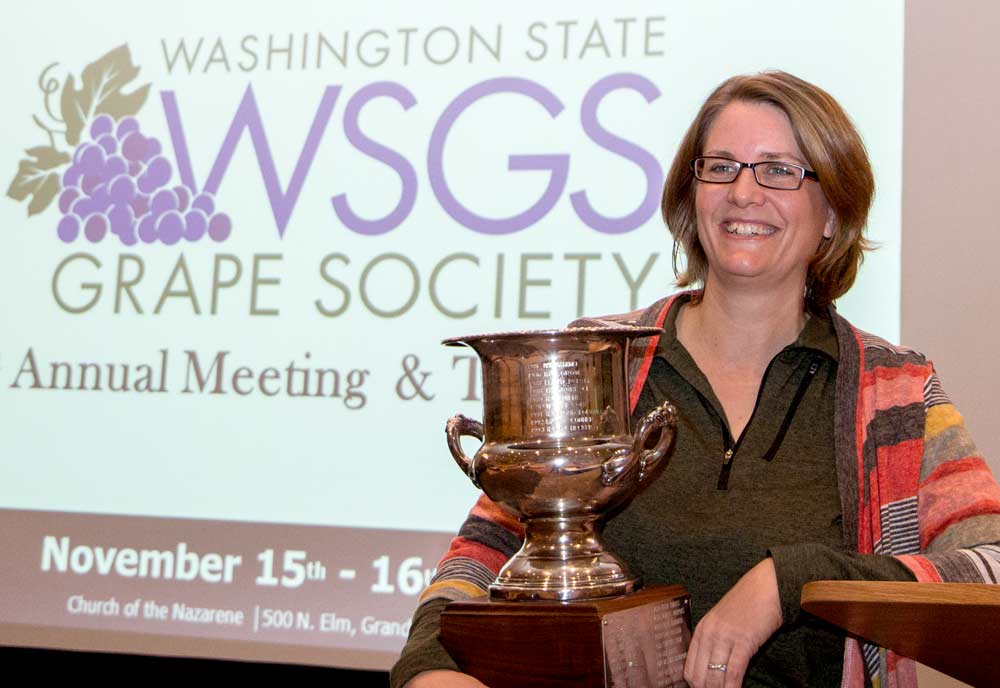
Gwen Hoheisel at the Washington Grape Society annual meeting on November 16, 2018, in Yakima, Washington. (Ross Courtney/Good Fruit Grower)
A Washington State University extension specialist received an industry award and a soil scientist discussed a possible connection between chlorosis and the bacteria in the soil beneath affected vines at the annual meeting of the Washington State Grape Society on Friday in Grandview.
The organization presented the annual Walter J. Clore Award to Gwen Hoheisel, a WSU extension specialist, for her overall contributions to the industry.
Meanwhile, researchers suspect they have found a correlation between vines sickened with chlorosis, a condition of leaves producing insufficient chlorophyll and turning yellow, and the bacteria in the soil surrounding the roots of those vines, said Tarah Sullivan, a soil microbiology professor, during the second and final day of the Washington State Grape Society annual meeting. They did not find the same connection to fungi, she said.
Sullivan suspects healthy vines are recruiting beneficial rhizomes in the soil to help with their nutrient uptake but chlorotic vines are not.
Other speakers at the meeting discussed sprayer technology, red blotch vectors, the differences in irrigating juice and wine grapes and food safety compliance.
-by Ross Courtney






Leave A Comment